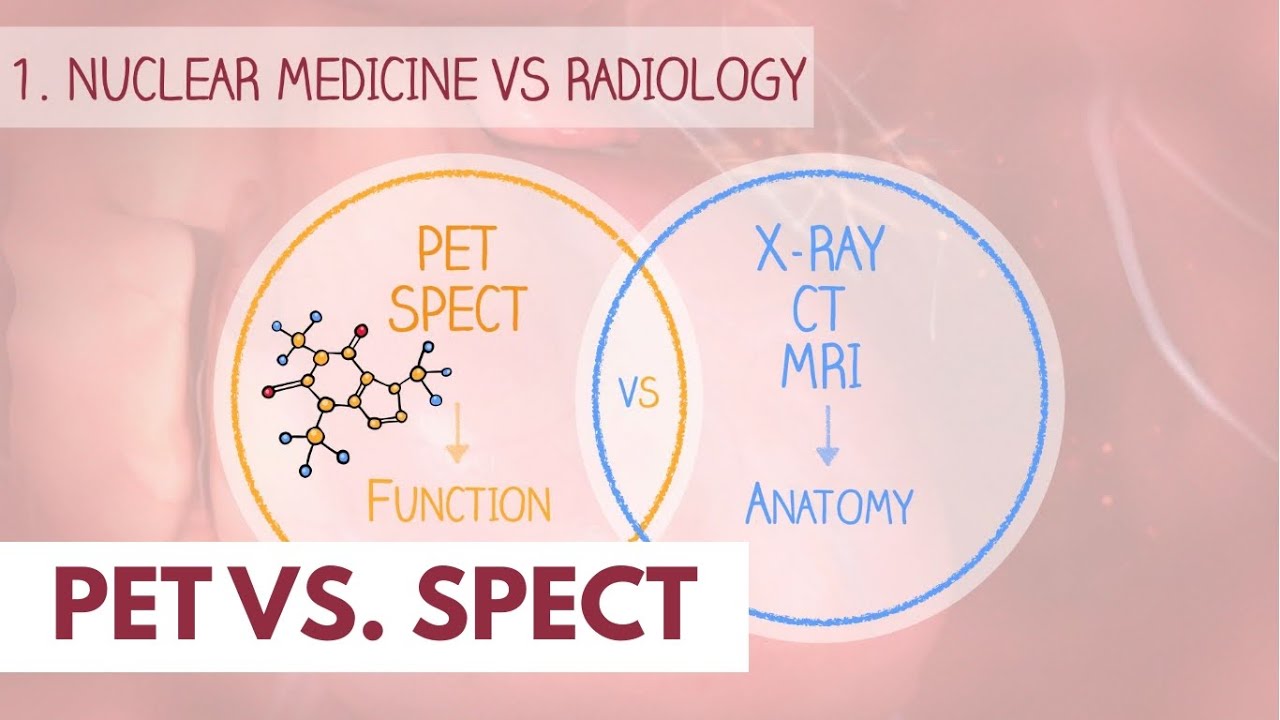Virtual tour | Nuclear medicine
Summary
TLDRKatie, a radiographer, introduces a hybrid SPECT/CT gamma camera used for cardiac stress imaging to assess blood flow in the heart. The camera captures radiation from a radioactive isotope injected into the patient, while the CT scanner provides anatomical details. The process involves monitoring the patient's heartbeat and creating a 3D reconstruction of the heart's contraction. Katie also explains the safety measures taken to minimize radiation exposure for both patients and staff.
Takeaways
- 🏥 Katie introduces herself as a radiographer and welcomes the viewer to the nuclear medicine department.
- 📈 The hybrid SPECT CT gamma camera is used for cardiac and stress imaging to examine blood flow to the heart muscle.
- 🔍 The gamma camera detects radiation from a radioactive isotope given to patients an hour before the scan.
- 📎 The CT scanner provides anatomical information to enhance the SPECT image of the heart.
- 🛏️ Patients lie on a table during the scan with ECG leads attached to monitor their heart rate.
- 💓 The scan measures the length of each heartbeat and creates a 3D reconstruction of the heart's contraction.
- 📊 Real-time images of the heart are displayed on a screen for both the patient and the medical staff to observe.
- 💉 Patients are injected with a radioactive isotope, which circulates in the body and is absorbed by the heart muscle.
- 🧪 The radioisotope lab is where radioactive isotopes are prepared and stored for injection into patients.
- 🛡️ Radiographers are closely monitored for radiation exposure with finger and whole-body dosimeters.
- 💉 Shielding and safety measures are taken when handling radioactive isotopes to minimize radiation exposure.
Q & A
What is the primary purpose of the hybrid SPECT CT gamma camera?
-The primary purpose of the hybrid SPECT CT gamma camera is to perform cardiac stress imaging to observe the blood flow to the heart muscle under stress and resting conditions.
How does the gamma camera part of the SPECT CT system work?
-The gamma camera part, which consists of two scanners at the front, picks up radiation from the radioactive material given to the patient an hour prior to the scan, collecting information emitted from the patient.
What role does the CT scanner play in the hybrid SPECT CT system?
-The CT scanner, resembling a giant donut at the back, provides anatomical information that helps enhance the SPECT image of the heart.
What is the purpose of the ECG leads attached to the patient during the scan?
-The ECG leads are used to monitor the patient's heart rate during the scan, allowing the scan to measure the length of each heartbeat.
How does the scan create a 3D reconstruction of the heart?
-The scan breaks down the heartbeats into sections and creates a 3D reconstruction, which allows for the observation of how the heart is contracting.
What is the typical timing for injecting the radioactive isotope into the patient?
-The radioactive isotope is injected into the patient an hour prior to imaging to allow time for it to circulate and absorb into the heart muscle.
What part of the heart does the radioactive injection highlight in the images?
-The radioactive injection highlights the left ventricle of the heart in the images.
What is the purpose of the radioisotope lab mentioned in the script?
-The radioisotope lab is where radioactive isotopes are prepared for injection into patients and where sealed sources for quality control checks on calibrators and the gamma camera are stored.
How is the staff's radiation exposure monitored?
-Staff members are closely monitored for radiation exposure through the use of finger dose rings and whole body dosimeters, which are changed every two months and provide a yearly total of exposure.
What safety measures are taken when handling radioactive isotopes?
-Safety measures include using lead-shielded vials and syringes, tongs to maximize distance from radiation, and a lead glass screen to protect from high doses during the drawing up process.
How is the radioactive contamination checked before staff members touch other objects?
-A mini scintillation monitor is used to check for radioactive contamination on hands before touching other objects, with counts per second indicating background radiation or contamination levels.
Outlines

This section is available to paid users only. Please upgrade to access this part.
Upgrade NowMindmap

This section is available to paid users only. Please upgrade to access this part.
Upgrade NowKeywords

This section is available to paid users only. Please upgrade to access this part.
Upgrade NowHighlights

This section is available to paid users only. Please upgrade to access this part.
Upgrade NowTranscripts

This section is available to paid users only. Please upgrade to access this part.
Upgrade Now5.0 / 5 (0 votes)





